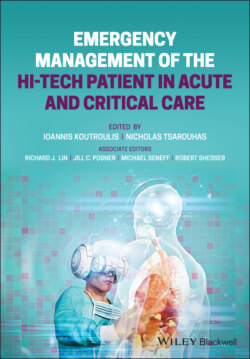Читать книгу Emergency Management of the Hi-Tech Patient in Acute and Critical Care - Группа авторов - Страница 30
Stomal Cellulitis
ОглавлениеStomal cellulitis is distinguished from skin irritation by the deeper red color and spreading erythema around a G‐tube site with significant pain to touch (Figure 1.3b). Patients with poor wound healing and an immunocompromised state are at increased risk for cellulitis. Pathogens are typically skin flora including beta‐hemolytic streptococci and Staphylococcus aureus. In a well‐appearing child with otherwise no systemic symptoms, a first‐generation cephalosporin is adequate to treat streptococcal infection. If a patient is a known methicillin‐resistant S. aureus carrier or appears ill, coverage should include agents that treat methicillin‐resistant Staphylococcus aureus (MRSA) based on local antibiograms. The tube does not need to be removed in the setting of stomal cellulitis. If there is fluctuance around the tube, an ultrasound should be obtained to evaluate for a peristomal abscess. Peristomal abscesses will require bedside incision and drainage and broad‐spectrum antibiotic coverage.
Figure 1.3 (a) Peristomal leakage notable for dried crusted skin without surrounding erythema. (b) Peristomal cellulitis distinguished from simple leakage by the deeper erythematous skin extending from the G‐tube site. (c) Peristomal candidiasis distinguished from cellulitis by its satellite lesions.
